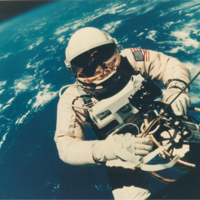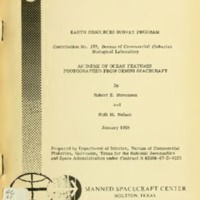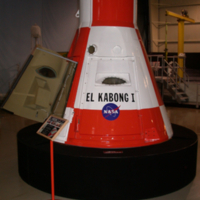The Spacewalk: Gemini Missions
This Gemini boilerplate, nicknamed "El Kabong I," was used for soft-landing drop tests as part of the Para-Sail program. Dropped from an aircraft, the Gemini capsule was suspended from a Para-Sail as it descended to a landing site at Fort Hood, TX in August 1965. Courtesy of the National Air and Space Museum, Smithsonian Institution.
The United States’ Gemini project, a second manned spaceflight program, began in 1961 and helped determine and test the requirements for NASA to successfully reach the Moon. The Gemini’s objectives were to test astronauts in space for long periods of time, vehicle docking and orbiting procedures, and safe spacecraft reentry and landing methods. The Gemini flights were the first manned missions to involve multiple crew members and explore long-term space travel.
The USSR Voskhod spacecraft launched in 1965 and on March 18th cosmonaut Aleksei Leonov achieved the first ever spacewalk, spending twenty minutes outside of the craft attached to an umbilical cord system. Three months later, astronaut Edward White, aboard the Gemini IV, became the first American to ever walk in space. White was also the first to use jet propulsion which allowed him to propel his body in the opposite direction and purposefully maneuver his actions during his spacewalk. Although the Soviet Union appeared to be ahead of the US in the Space Race, NASA was following a strategically planned program to ensure a moon landing with the Apollo missions in the coming years.






